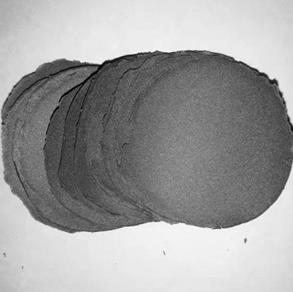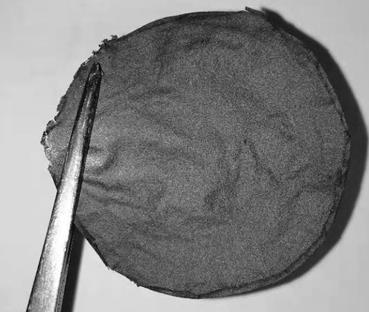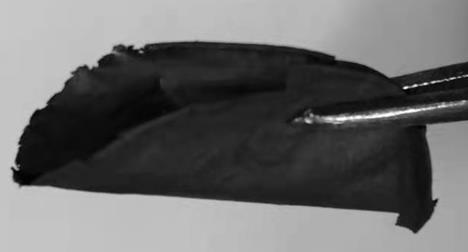A kind of composite wave absorbing film material and preparation method thereof
A film material and film technology are applied in the field of composite wave absorbing film materials and their preparation, which can solve the problems of unfavorable large-area promotion and high safety cost, and achieve the effects of good comprehensive wave absorption performance, energy saving and process time shortening.
- Summary
- Abstract
- Description
- Claims
- Application Information
AI Technical Summary
Problems solved by technology
Method used
Image
Examples
Embodiment 1
[0033] A preparation method of a composite wave absorbing film material, comprising the following steps:
[0034] In step 1, 1.9 g of copper nitrate trihydrate and 1.7 g of trimesic acid were added to 100 mL of deionized water and 100 mL of ethanol respectively, stirred for 15 min until dissolved, and mixed to obtain solution A;
[0035] Step 2, adding 10 mL of graphite oxide hydrosol with a concentration of 10 mg / mL into 200 mL of ethanol, and ultrasonically dispersing for 30 min to obtain a uniformly dispersed graphene oxide solution;
[0036] Step 3, adding the graphene oxide solution of step 2 to solution A in step 1 and stirring for 18 h to obtain solution B;
[0037] Step 4, place the PTFE suction filtration membrane with a pore size of 450 nm on the sand core of the suction filtration bottle, set up the suction filtration device, pour 20 mL of B liquid into the suction filtration device, and perform suction filtration for about 10 min. Remove the suction filtration mem...
Embodiment 2
[0043] The preparation method of the composite wave absorbing film material in this example is as follows: the HKUST-1 / graphene oxide composite film after drying in step 5 in Example 1 is heat-treated at 500° C. for 3 h in a nitrogen atmosphere. The reflection loss of the obtained absorbing film in the range of 2-18 GHz is as follows: Figure 5 shown.
Embodiment 3
[0045] The preparation method of the composite wave absorbing film material in this embodiment is as follows: the HKUST-1 / graphene oxide composite film after drying in step 5 in Example 1 is heat-treated at 600° C. for 3 h in a nitrogen atmosphere. The reflection loss of the obtained absorbing film in the range of 2-18 GHz is as follows: Image 6 shown.
PUM
| Property | Measurement | Unit |
|---|---|---|
| concentration | aaaaa | aaaaa |
| pore size | aaaaa | aaaaa |
| pore size | aaaaa | aaaaa |
Abstract
Description
Claims
Application Information
 Login to View More
Login to View More - R&D
- Intellectual Property
- Life Sciences
- Materials
- Tech Scout
- Unparalleled Data Quality
- Higher Quality Content
- 60% Fewer Hallucinations
Browse by: Latest US Patents, China's latest patents, Technical Efficacy Thesaurus, Application Domain, Technology Topic, Popular Technical Reports.
© 2025 PatSnap. All rights reserved.Legal|Privacy policy|Modern Slavery Act Transparency Statement|Sitemap|About US| Contact US: help@patsnap.com



